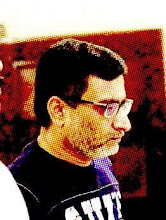Chitrasutra is an ancient Indian treatise on painting, forming part of the larger encyclopedic text The Vishnudharmottara. It is dated around 7th Century AD. This text collected the theory and practise of the art of painting and covered several advanced concepts for the painter.
A few quotes from the text ..
The masters praise the rekha's –lines (delineation and articulation of form); the connoisseurs praise the display of light and shade; women like the display of ornaments; and , the richness of colors appeals to common folks. The artists, therefore, should take great care to ensure that the painting is appreciated by every one.
The six limbs (anga) of painting as: rupa-bheda (variety of form); pramana (proportion); Bhava (infusion of emotions); lavanya-yojanam (creation of luster and having rainbow colors that appear to move and change as the angle at which they are seen change); sadreya (portrayal of likeness); and varnika-bhanga (color mixing and brushwork to produce the desired effect).
The concern of the artist should not be to just faithfully reproduce the forms around him. The artist should try to look beyond the tangible world, the beauty of form that meets the eye. He should lift that veil and look within. Look beyond “The phenomenal world of separated beings and objects that blind the reality beyond”.
Shri Sreenivasarao Subbanna has written a scholarly series of wonderful articles elucidating its contents and followed up with a beautiful research of the application of the theory in subsequent centuries. I am providing a little index of sorts to his wonderful set of articles.
The Art of Painting
Chapter 1
Chapter 2
Chapter 3
Chapter 4
Annexure to Chapter 4
Chapter 5
Annexure to Chapter 5
 |
| Image Courtesy Shri S Rajam |
Chapter 1
Chapter 2 - Pitalkhora
Chapter 3 - Badami
Chapter 4 - Sittannavasal
Chapter 5 - Panamalai
Chapter 6 - Kailasanatha of Kanchi
Chapter 7 - Brihadishvara
Appendix to Chapter 7 - The Maratha Nayak Paintings
Chapter 8 - Sri Pampa Virupaksha Temple Hampi
Chapter 9 - Lepakshi
Chapter 10 - Jaina Kanchi
Chapter 11 - Murals of Kerala
Chapter 12 - Murals of Kerala Mattanchery and Padmanabhapuram
Chapter 13 - Shri S Rajam Part I
Chapter 14 - Shri S Rajam Part II
This series of articles throws light on the rich tradition of the schools of painting in India from antiquity, and helps understand the evolution of style and methods, which fall highly on the Abstract and Symbolic side.
A 1928 translation of the original text can be found at the Archive.Org.











